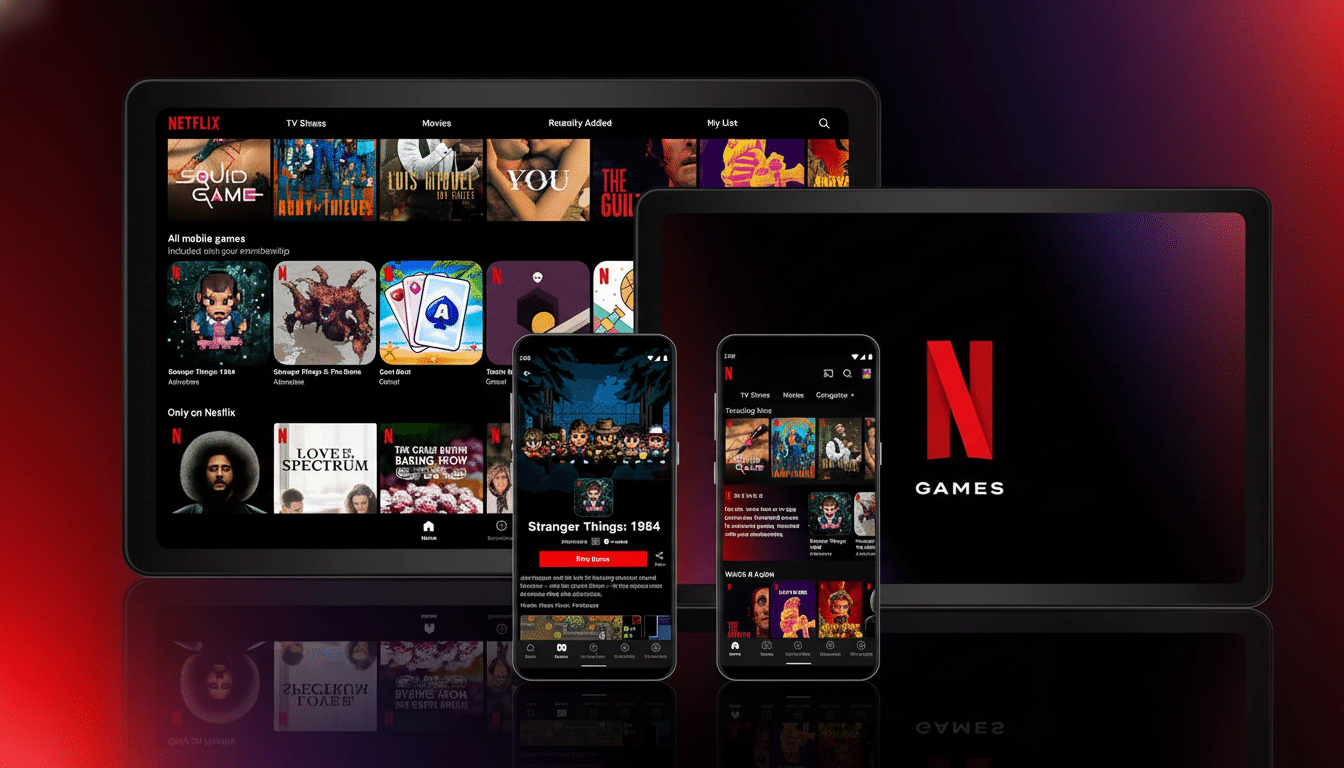Netflix is expanding its push into gaming to the biggest screen in the home — smart TVs — allowing subscribers to play games without that dull console. It’s a logical next move for the streamer, which has been amassing a library of franchises and studios in preparation to have the living room be part of its flywheel for engagement and retention.
The move extends Netflix’s aspirations to be more than a video app. By turning the TV app into a play space, the company is suggesting that games are just as legitimate a thing to do with its tech as watching shows and movies, not merely an occasional side dish on mobile.

How Netflix Gaming on the Big Screen Actually Works
Within the Netflix TV app, a tab for Games features playable titles. Option one: Pick a game on your TV, and connect a phone as the controller. In early trials, pairing required a QR code and a lightweight controller app, so anticipate a similar tap-and-play setup that eliminates all the fiddly account gymnastics.
There is no console to purchase and usually no full game downloads on the TV. Titles are served from the internet, and Netflix does all of the heavy lifting in the cloud. The promise is instant-start play and little friction; the challenge is to not let input latency creep high enough to matter for responsive play, which is where Netflix’s own streaming experience and adaptive bitrate tech should come into play.
Why Netflix’s Push Into TV Gaming Matters Now
Streaming already commands a big chunk of TV usage, according to Nielsen’s The Gauge, with the living room still being where households come together. The average American home has more than two connected TV devices, Leichtman Research Group found, providing Netflix with a wide hardware footprint without having to actually produce anything new.
TV games elongate sessions and give people a reason to remain in the app between episodes. That matters in an attention market where engagement is negatively correlated with churn, and time and again analysts and retention studies have been pointing at the diversification of use cases as building stickier subscriptions.
Party Play Is Netflix’s Opening Gambit on TVs
First, Netflix’s first wave on TV focuses on party and social titles, meant for short sessions and group play. That suits the couch setting and falls back on an existing second screen that everyone already has. Working with a phone as a controller takes away one of gaming’s biggest obstacles in the living room: An ever-present frustration is that you don’t have enough charged gamepads around to make an experience enjoyable for two, three or four players.
The strategy follows in the footsteps of approachable franchises, such as Jackbox Party Pack, which used phones as controllers and developed a following around trivia, mini-games and streamable fun. And, oh, for Netflix to eventually play around with its own franchises — quiz formats, interactive titles and casual talent shows built on hot series.

Availability and Requirements for Netflix TV Gaming
The rollout is starting on some smart TVs and streaming devices in a restricted number of countries, with more screens added as the weeks go by. An input-demanding smartphone is mandatory, and pairing occurs within the TV app. Profiles and parental controls remain consistent with Netflix’s core experience, so families can control access in the same way that they manage shows and movies.
While support for Bluetooth gamepads would open up the traditionally-minded gaming audience, this first round of availability aims to require no extra hardware at all. As it validates performance across various chips, TV operating systems and network conditions, Netflix can add support for new devices.
The Competitive Picture for Living Room Cloud Gaming
It’s getting crowded in living room gaming. Apple Arcade is available on Apple TV, Amazon Luna streams to Fire TV, Xbox Cloud Gaming has shipped on select Samsung sets, and Nvidia GeForce Now is built in to some LG and Samsung models. Netflix’s approach is different: Games are bundled into the subscription, with no additional fee or ads — and discovery lives next to your watchlist.
The company has been building to this moment — acquiring studios like Night School Studio and Spry Fox, funding in-house teams, publishing an incredibly diverse roster from indies to corporate brand tie-ins. Third-party analytics companies such as Apptopia and Sensor Tower have observed that name-brand launches helped to lift mobile engagement, indicating that famous IP coupled with low-friction accessibility could move the needle given appropriate distribution.
What to Watch Next as Netflix Expands TV Gaming
If they can make all that come together, the service has a real shot at success. Let’s see: Can it deliver invisible latency in the mainstream home network? Can it supply a regular cadence of appealing games that translate well to phone controls? The third would require smart integration with Netflix IP.
If those pieces do cohere, you can look forward to wider device support, possibly even a form of gamepad play that’s optional across the lineup, and more serious experiments with cloud-streamed games beyond casual fare.
For viewers, the pitch is this: You already have the app, and the controller, in your pocket. The addition of games to TV-capable devices turns idle time browsing the Netflix catalog into playtime — and is a new means for the service to stake a claim at the center of living rooms.

